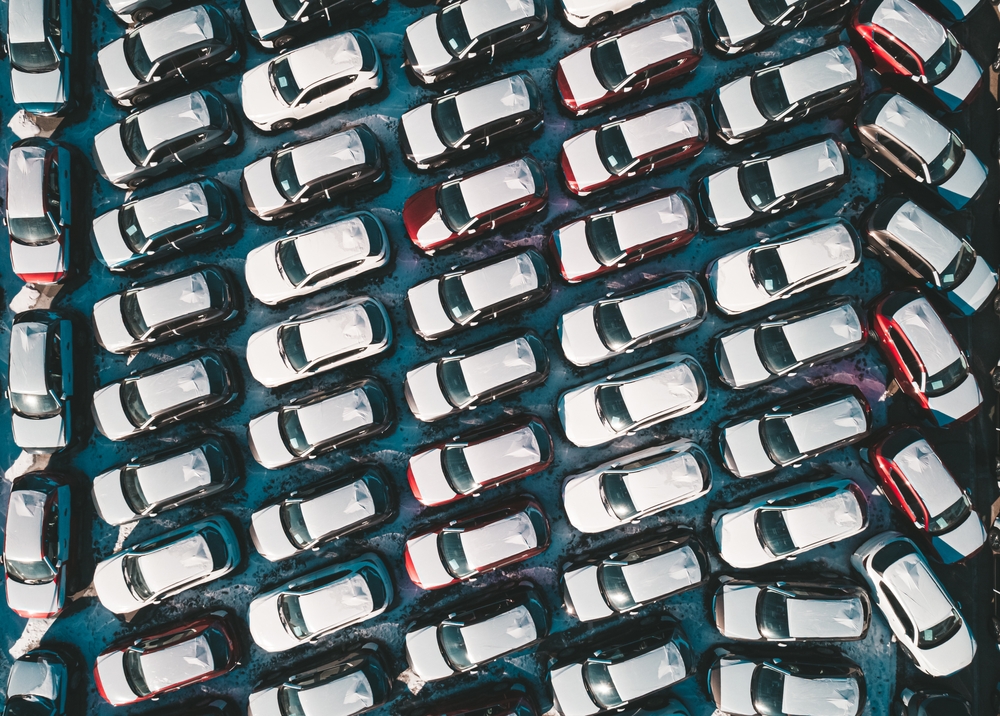One day, perhaps the only reason people will visit a car dealership will be to get measured.
A machine would precisely laser-scan buyers’ weight-bearing backsides and send the data to a 3-D printer at the dealership, or at one of thousands of small-volume automated centers that could potentially dominate the industry. An upholstery printer, if you like. Along the way customers would have looked through thousands of virtual AI-iterated colors and patterns, allowing them to personalize their cars in ways that are impossible in the current era of cookie-cutter mass production.
In hours or days, the car seat of your dreams would materialize at a delivery center.
What stands between us and this world of bespoke personal transportation? Technically, not a lot. But it will require that carmakers fundamentally change the way that they design, build and sell cars—and, importantly, the speed at which they do it. Ironically, the transportation sector doesn’t move very quickly.
To appreciate the individually focused future of automaking, it helps to look at the current industry standard. Consider the Toyota Camry, one of the most popular cars in American history: While the midsize sedan looks smooth on the outside, its metal structure is actually a collage of smaller steel, aluminum and mixed-metal parts, which are stamped out, extruded, forged or cast and assembled into resilient structures called unit-bodies, using a variety of mechanical fasteners, welds and adhesives.
Building cars this way is inflexible, labor-intensive and imprecise. The process also comes with high levels of energy use, emissions and material costs. And yet, for a variety of reasons, the industry has been slow to embrace next-generation manufacturing.
Except for Tesla. In the latter half of the last decade, the Silicon Valley car company began investing in what’s called gigacasting: the use of large-format, high-pressure aluminum die-castings to replace dozens of jigsawed parts. Initially developed by the Italian supplier IDRA, the giant gigacasting presses have become the foundation of Tesla’s global strategy and pivotal in its industry-leading profitability.
In interviews, Musk has said the company’s goal is to die cast entire vehicle underbodies in a single, dimensionally perfect piece, thereby eliminating hundreds of parts and innumerable processes.
Such structures would emerge from the casting machines practically finished. “You don’t have to treat it, trim it, do anything to it,” said manufacturing consultant Sandy Munro, of Munro & Associates in Auburn, Mich. “It’s like magic.”
New manufacturing processes could serve another goal: addressing the carbon footprint. Western legacy carmakers have taken some sort of net-zero pledge—not just carbon neutrality but a far higher standard of eliminating or offsetting all emissions by midcentury.
However sincere legacy carmakers might be about getting to net zero, they have “no chance” making cars the usual way, says Keven Czinger, CEO of Divergent Technologies, an advanced-manufacturing consultancy in Torrance, Calif. In terms of total life-cycle emissions—the upstream inputs of energy, mining, processing and manufacturing, as well as end-of-life recycling and disposal—“the way we make cars has a greater impact on the environment than how we fuel them,” he says.
Czinger’s vision is to “dematerialize automobile manufacturing”—that is, to consume dramatically less material and energy—by “democratizing its production” in thousands of 3D-printing microfactories around the world.
Founded in 2015, Divergent Technologies provides technical services in additive manufacturing, or, 3-D printing—including AI-enabled design optimization and robotic assembly—to clients in the automotive and defense industries. In 2017, Czinger’s son Lucas joined the company after graduating from Yale University with a degree in electrical engineering. The two founded Czinger Vehicles in 2019, with the purpose of building the Czinger 21C, a radical gas-electric hybrid car with a preponderance of 3-D printed components.
With a mass-optimized curb weight of about 3,000 pounds, and up to 1,250 horsepower churning all four wheels, the 21C is almost unbearably quick: 0-60 mph in under 2 seconds with a ¼-mile elapsed time of 8.1 seconds, according to Czinger. The company’s near-production prototype spent the summer of 2023 breaking track records at race circuits around the country.
As yet, there are no such things as 3D-printed tires. The 21C’s glass and carbon-fiber panels are also conventionally formed, if you want to call it that. Although not technically printed, the V8’s block is robotically milled out of steel billet in a six-axis machine—close enough.
Most of the rest was conjured out of Czinger’s proprietary palette of high-spec alloys in an additive manufacturing process called laser sintering. During my recent visit, Lucas invited me to contemplate the car’s front brake “node,” a webbed metal structure about the size of a basketball that replaces steering knuckles, hub and brake calipers. Some structures are hollow, carrying hydraulics and channeling airflow. “A piece like this simply couldn’t be made with conventional tooling,” he says.
The parts emerging from AI optimization all share a soft, spare, biomimetic quality. “It’s an artifact of the iterative design process,” Kevin Czinger says. “Natural selection is always seeking maximum efficiency, putting material only where it needs to be.”
For its part, Toyota—maker of the redoubtable Camry—hopes to anticipate buyers’ wants, whims, needs and cravings, long before anybody presses the Print button.
In 2022, design researchers at Toyota Research Institute in California began experimenting in vehicle design with Stable Diffusion, a generative-AI text-to-image model that produces photorealistic results. The AI is capable of working from broad and often imprecise cues—”sleek, masculine coupe,” for example—to get human designers to the rough-sketch stage.
The dataset “was certainly not optimized for automobiles,” notes project leader Avinash Balachandran. Since then, TRI’s team has been teaching the AI to analyze the imagery it sees in terms of aerodynamic efficiency. The next steps, Balachandran says, are to understand what other engineering quantities can be inferred; and “to figure out a way to incorporate all of Toyota’s design resources and engineering archives.”
If the AI optimization of automotive aesthetics makes you the least uneasy, know that Toyota’s technology always has a human agent calling the shots, Dr. Balachandran said. “Our work is only to amplify that of the designers and engineers, not to replace them.”






